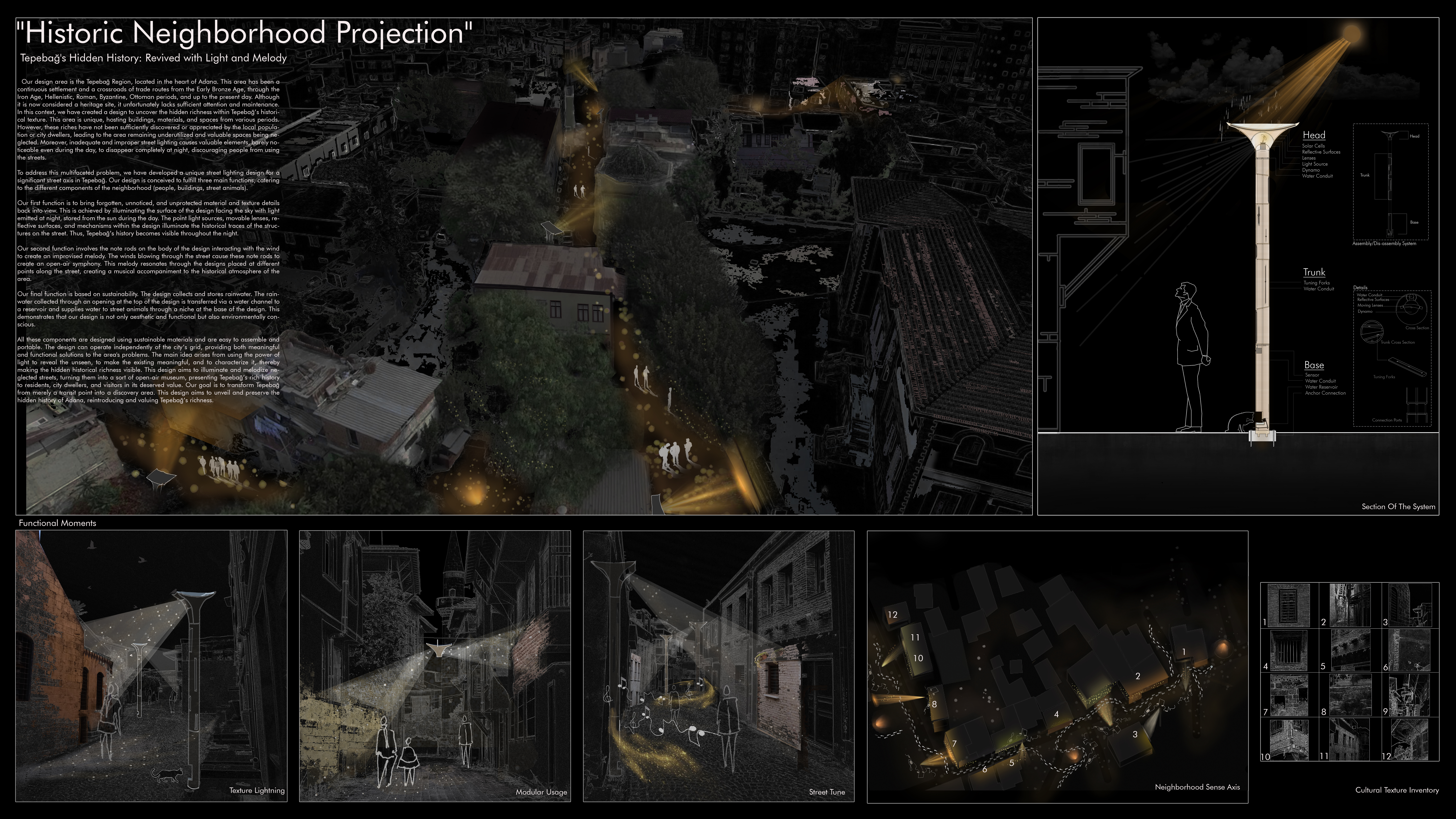2024 - Historic Neighborhood Projection

Category
Daylight Investigations - Region 2: Eastern Europe and the Middle East
Students
Refik Berk Çıngıloğlu, Tolgahan Yıldırım, Mehmet Alan Çiftçi, Miyase Sude Biber & Ömer Faruk Ergüner
Teacher
Kasım Çelik
School
Çukurova University
Country
Turkey
Download
Download project board
Our design area is the Tepebağ Region, located in the heart of Adana. This area has been a continuous settlement and a crossroads of trade routes from the Early Bronze Age, through the Iron Age, Hellenistic, Roman, Byzantine, Ottoman periods, and up to the present day. Although it is now considered a heritage site, it unfortunately lacks sufficient attention and maintenance. In this context, we have created a design to uncover the hidden richness within Tepebağ’s historical texture. This area is unique, hosting buildings, materials, and spaces from various periods. However, these riches have not been sufficiently discovered or appreciated by the local population or city dwellers, leading to the area remaining underutilized and valuable spaces being neglected. Moreover, inadequate and improper street lighting causes valuable elements, barely noticeable even during the day, to disappear completely at night, discouraging people from using the streets.
To address this multifaceted problem, we have developed a unique street lighting design for a significant street axis in Tepebağ. Our design is conceived to fulfill three main functions, catering to the different components of the neighborhood (people, buildings, street animals).
Our first function is to bring forgotten, unnoticed, and unprotected material and texture details back into view. This is achieved by illuminating the surface of the design facing the sky with light emitted at night, stored from the sun during the day. The point light sources, movable lenses, reflective surfaces, and mechanisms within the design illuminate the historical traces of the structures on the street. Thus, Tepebağ’s history becomes visible throughout the night.
Our second function involves the note rods on the body of the design interacting with the wind to create an improvised melody. The winds blowing through the street cause these note rods to create an open-air symphony. This melody resonates through the designs placed at different points along the street, creating a musical accompaniment to the historical atmosphere of the area.
Our final function is based on sustainability. The design collects and stores rainwater. The rainwater collected through an opening at the top of the design is transferred via a water channel to a reservoir and supplies water to street animals through a niche at the base of the design. This demonstrates that our design is not only aesthetic and functional but also environmentally conscious.
All these components are designed using sustainable materials and are easy to assemble and portable. The design can operate independently of the city’s grid, providing both meaningful and functional solutions to the area’s problems. The main idea arises from using the power of light to reveal the unseen, to make the existing meaningful, and to characterize it, thereby making the hidden historical richness visible. This design aims to illuminate and melodize neglected streets, turning them into a sort of open-air museum, presenting Tepebağ’s rich history to residents, city dwellers, and visitors in its deserved value. Our goal is to transform Tepebağ from merely a transit point into a discovery area. This design aims to unveil and preserve the hidden history of Adana, reintroducing and valuing Tepebağ’s richness.

























